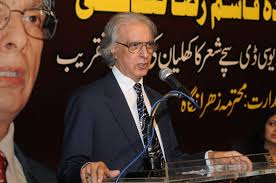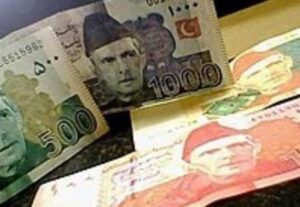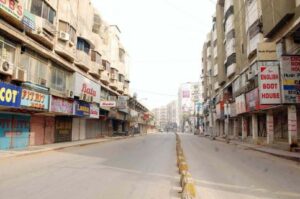Pirzada Qasim: A force in shaping of literary….

By Shahid Rizvi
Pirzada Qasim belongs to the group of writers and poets who emerged after the 70s. This period is distinctive in having different qualities as compared to its preceding periods when Progressive Writers Association reigned through its stalwarts, and the subsequent times from partition to 70s.
The PWA period was marked by the spirit of freedom and struggle against foreign domination and a zeal determination to create an exploitation-free society. Political panorama influence is always the dominating force in shaping literary trends. The writers and poets of that period had before them the ideal of Soviet Society and the sacrifice and struggle made for that.
They had to abandon the old legacy of poetry confined to the angelic form of love and romance. Majaz, Faiz, Furaq, Jazbi, Majrooh, Kaifi Azmi, and Ahmed Nadeem Qasmi – a full galaxy of poets – portrayed the aspirations of the people through this medium. With the change in content, the form of literature was also put to experiments.
But the ghazal remained the darling of Urdu poetry. More liberal styles were adopted, and the old form of love was altogether left out. Instead of the first form in Urdu literature, the sweetheart was taken as a human being, having all the qualities of being made of flesh and blood.
The poetry of that period is full of vigor, determination, and strong belief in the forward movement of human society. The poetry had all the pathos, agony, and torture suffered by the people through the medium of the poet himself, but glowing with hope and strong optimism.
The second period which is started after partition was an era that diffused, all the hopes, and certainties as the political, economic, and social conditions showed no change to the better instead pictured a worsening scenario.
Unemployment, poverty, hunger unhygienic conditions of health and shelter, and corruption created a culture of despair. The poetry of this period is full of such tendencies and trends that show the futility of life, the inclination to cut off relations from the world, meaningless struggle, and led to a deep journey in the inner self. These tendencies had no ray of hope. Poets, by heir very nature, are unable to become selfish.
They therefore suffered the most. The ideologies of laeiniet and hypersensitivity and others entered our intellectual forums, and poetry in particular, in this period.
The period after the 70s was marked by certain important changes in the social and political life of the country. The important change was massive migration of our youth Middle East, Europe, and America.
The Korean boom and it is after effects which showed up during subsequent periods making a few thousand families able to send their children for education and foreign countries.
A middle class emerged in the urban areas who got access to world developments in direct contact. The ideologies, theories, and literary trends in Europe and America had become known to our poets and writers.
The conditions brought more healthy trends in literature. We see more confidence, determination to struggle, to think of problems of life as solvable, meaningful struggles, and hopes for the future as important facets and trends in literature. The old experiments in the form were analyzed and new shapes were given to them.
Pirzada Qasim is mainly a poet of ghazal. The lyrical tone of his poems also confirms it. He represents the new generation which believes in the sanctity and meaningful human life and its struggle for a better world.
His poetry as a whole is the exponent of positive thoughts. How much the belief in the struggle and determination of man is shown by the two couplets of Ghalib and Mir quoted in the beginning of his poetical collection “Tund Hawa Ke Jashan Main.”
Some of his verses speak for themselves:
‘Khoon se jab jala diya ek diya bujha howa
Phir mujhey de diya gya ek diya bhuja howa’
He is the man who has unquestionably the capacity to light up with his blood the lamps new or those which have been put out.
‘Meray lahu main jal uthey utney hi taza dam chirag
Waqat ki sajishi hawa jitney diye bujhaye gi’
Koui hey jo shikast e zabt e gham honey nahi deta
Mein roona chahta hoon aur who rooney nahi deta’
His ghazals have a very shining style showing new horizons.
The other mood of his poetry is the expression of sorrow and grief, pain, and pathos which is the main is string of ghazal.
Ghazal by its nature cannot go beyond the symbolism of emotions, and that two personalized emotions. It cannot narrate an event like ‘nazam, blank verse, or prose poetry. It is committed to the feelings, thoughts, and passion of a poet. It encompasses the philosophical, social, religious, or other aspects of life but only through tenderness of emotions. If any event does not touch the heart, he can never compose a verse in ghazal. It is a little different in writing or prose poetry or short story.
A sublimated sensitivity is an essential part of a poet’s nature for composing ghazal. The sufferings of other people strike the emotions of poets are forcefully as of himself. A great poet represents not only himself but all others through himself.
This expression of grief and pain has two origins but without a demarcating line. The person feelings of the poet which he encounters in life, and the feelings coming through all other people.
Both the experiments are mixed up and the results are versus which touch each other and the hearts of the people. It depends on the maturity of the poet whether the verse contains the agony and torture the poet has suffered or it is a symbol representing all.
Pirzada Qasim in his book while talking to the readers has said that some 40 years of his life were passed in despair, dejection and troubles. However, the influences of all this period on his poetry are mostly non-existent. It is because of his being a successful contender to those problems or because of his maturity of mind. Pirzada Qasim is a well-read person, a professor, and a research scholar, and has very clear and deep imaginative as well as realistic thinking about the world.
He fully perceives what the scientific and technological revolution has brought to the world and how overwhelmingly it has captured the life. New vistas and new horizons have opened before our eyes along with upheavals in social structures.
All this has given a much wider scope to his verses containing the pathetic and sorrowful tone. Except for a few versus where it appears that days are bound with the poet’s person only, most of such verses and which are in abundance, have a much wider scope. The terminology of ghazal always gives a much wider scope to the word.
His pain and grief absorb the pain and grief of his people in the composition of verses.
Pirzada Qasim has another quality of using new vocabulary, craving out new words and settings, and making the old words more meaningful in this way. Such constructions of words is shown by shab asham, Nishat e girya, chob-e-jan, and many others.
It is a unique quality found only in refined poetry. The use of weak words which either do not rhyme with the verse or give scanty meaning to it, is a compulsion most of the poet face. Pirzada is no exception. In his Khoon se jab jala diya ek diya bujha howa give an awkward coarse tone. The astonishing verse of Ghalib, ‘Hum ne dashat e imkan ko ek naqash e pa paya’ is criticized for this very technical fault.








